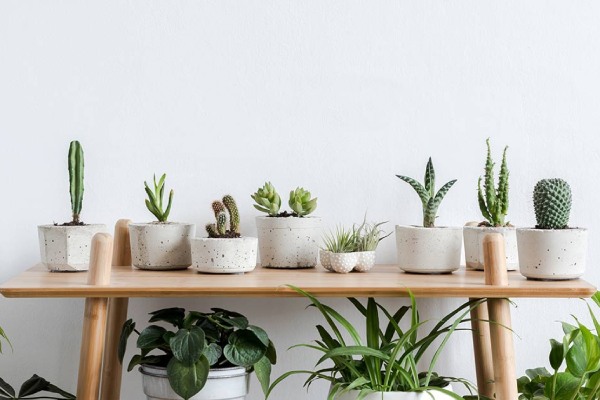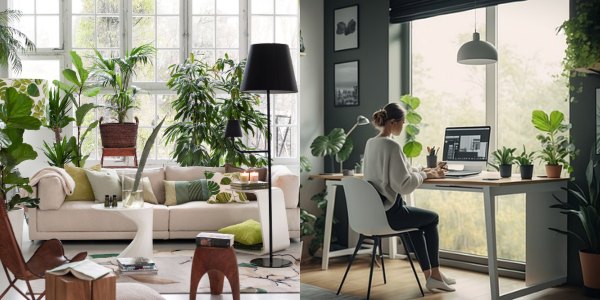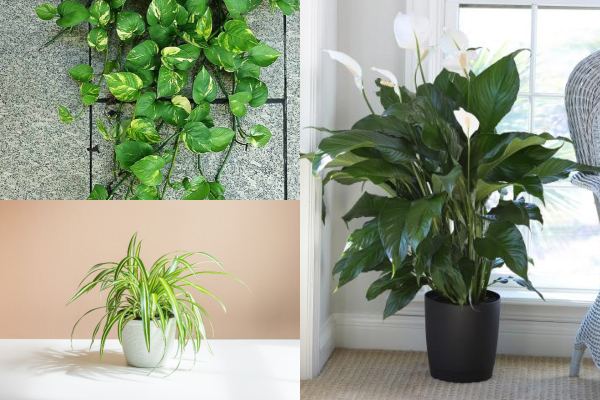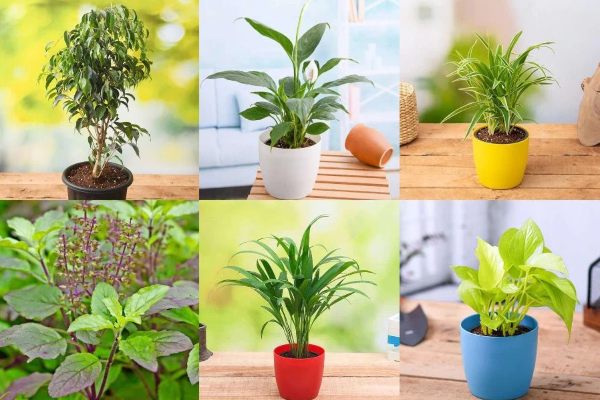Plants play a vital role in human survival on Earth. They are fundamental to the functioning of ecosystems, the global carbon cycle, and the provision of food, medicine, and so on. Similarly, their most significant contribution to life on Earth is oxygen production. While most plants produce oxygen during photosynthesis, some do it more efficiently. Meanwhile, enhance the air quality of your living space by incorporating indoor plants that can effectively increase oxygen production.
Nowadays, many people in this world are opting to keep indoor plants as a way to promote a healthier living environment. These plants release oxygen and help to improve the quality of indoor air.
How to discover the best indoor plants for oxygen?
Selecting the plants that increase oxygen levels in your home includes several factors such as the plant’s ability to photosynthesize efficiently, its growth habits, and its adaptability to indoor environments.
Always look for plants that have large, broad leaves as they likely have higher rates of photosynthesis and oxygen production compared to those with small or narrow leaves. For example; Pothos, Peace Lilies, Snake plants, and so on.

You need to look for plants with lush foliage with ample surface area for maximum oxygen production. Similarly, it is very important to ensure that the plants get appropriate lighting, temperature, and humidity for optimal growth and oxygen production.
Additionally, you can seek advice from nearby greenhouses, botanical gardens, or plant experts. They can provide personalized recommendations and guidance on plant care based on your specific needs and preferences.
Which is the best place to put the plants in your home/office?
The placement of plants in your home/office is determined by the needs of the plants, the layout of your space, and the environmental conditions of your place.
To ensure maximum oxygen production it is very important to provide your plant with the proper environment. Most indoor plants require adequate sunlight to go through photosynthesis and produce oxygen.
So, you need to identify areas in your home with sufficient natural light such as south-facing windows to receive the light they need. Plants need to be placed in at least 6 hours of light every day.
Similarly, the appropriate level of humidity and temperature is essential for plants. Most of the plants adjust in temperature between 18 to 24 degrees Celsius during the day. Further, you can use a humidifier if the air is too dry to adjust humidity.
Unveiling the remarkable health benefits of your indoor plants

Aside from aesthetic appeal, indoor plants offer a lot of benefits to the well-being of human beings including air purification, stress reduction, mood enhancement, immune function, and so on.
- Studies have found that spending time around indoor plants helps to reduce anxiety and stress.
- Having plants in your home or workspace creates a positive impact on your mood and productivity.
- Indoor plants maintain optimal humidity as they release moisture vapor which increases the humidity of the air.
- Placing plants in your bedroom can improve sleep quality and create a relaxing environment for better sleep.
- Research indicates that exposure to visible greenery has a healing impact and can increase concentration, particularly in children.
- Plants may help to minimize noise by absorbing, diffracting, and reflecting sound, creating a calmer and more pleasant environment for healing.
- Furthermore, plants can help oppose dry air, which is excellent for people with respiratory issues.
Indoor Plants in hospitals can help improve patient recovery
Indoor plants have emerged as more than just decorative elements in hospitals. Hospital administrators have now been recognized for their significant impact on patient recovery.
Research has shown that the patients in hospital rooms with plants had lower systolic blood pressure, as well as less pain, anxiety, and fatigue, than those in rooms without plants.
These green companions not only purify the air by removing harmful toxins but also improve air quality, creating a soothing environment that is conducive to healing for patients to recover.
Researchers also remarked that plants in the rooms gave the impression that medical workers were taking better care of the patients.
As a result, hospitals all around the world are now incorporating plants into common spaces, waiting rooms, and patient rooms.
What are some plants that help to purify the air in your bedroom?
If you want to improve the air quality in your bedroom, indoor plants are a great option. In addition, the aesthetic appeal of indoor plants gives bedrooms a feel of nature and increases the room’s vibrancy and liveliness.
Here are some plants that are well–suited for bedroom environments.
Snake Plant
The snake Plant is one of the most attractive bedroom plants with its unique ability to perform photosynthesis at night. Usually, most plants produce oxygen only during the day.
Similarly, they are particularly effective at purifying the air. They can filter out many harmful toxins such as formaldehyde, benzene, and xylene from the air.
It is easy to maintain and does not require frequent watering. However, it does require some sunlight.
Aloe Vera
Aloe Vera, scientifically known as Aloe barbadensis, is similar to a snake plant, in that it purifies the air inside the room and increases the oxygen level even during the night.
Besides, it has health benefits that the gel inside aloe vera leaves has soothing properties and can be used to treat minor burns and skin irritations.
Money Plant
Money Plant is one of the ideal plants for bedrooms. It is the perfect natural air purifier that helps to remove airborne pollutants from the indoor air such as Benzene, formaldehyde, Carbon Monoxide, and Xylene.
Placing a money plant in the bedroom produces a positive and happy environment.

Boston Fern
Boston Fern thrives in low-light conditions as well. It is one of the easiest plants to care for in the bedroom. It can help create a healthy and comfortable indoor environment with its air-purifying properties.
Furthermore, it provides health benefits to those who suffer from dry skin, nose, or throat.
Peace Lilies
Peace Lilies are excellent for removing pollutants such as formaldehyde, benzene, and ammonia from the air and can help improve indoor air quality.
In the context of a bedroom, many people find peace Lilies to be a beneficial addition due to their ability to increase humidity and create a relaxing atmosphere.
Peace lilies are considered lucky plants that offer good fortune in the coming year. They are also recognized for promoting wealth in the material and spiritual worlds.
Frequently Asked Questions
1. Can indoor plants produce oxygen in your home?
Yes, adding plants to your home can help raise oxygen levels. Plants generate oxygen during photosynthesis.
2. Which indoor plants produce the most oxygen?
Plants that have large, broad leaves as they likely to have higher rates of photosynthesis and oxygen production compared to those with small or narrow leaves. For example; Pothos, Peace Lilies, Snake plants, and so on.
3. How do indoor plants enhance your health?
Aloe vera has health benefits that the gel inside it has soothing properties and can be used to treat minor burns and skin irritations.
Also read, Here are 11 Indoor Palm Plants That Give Your House a Tropical Touch!
